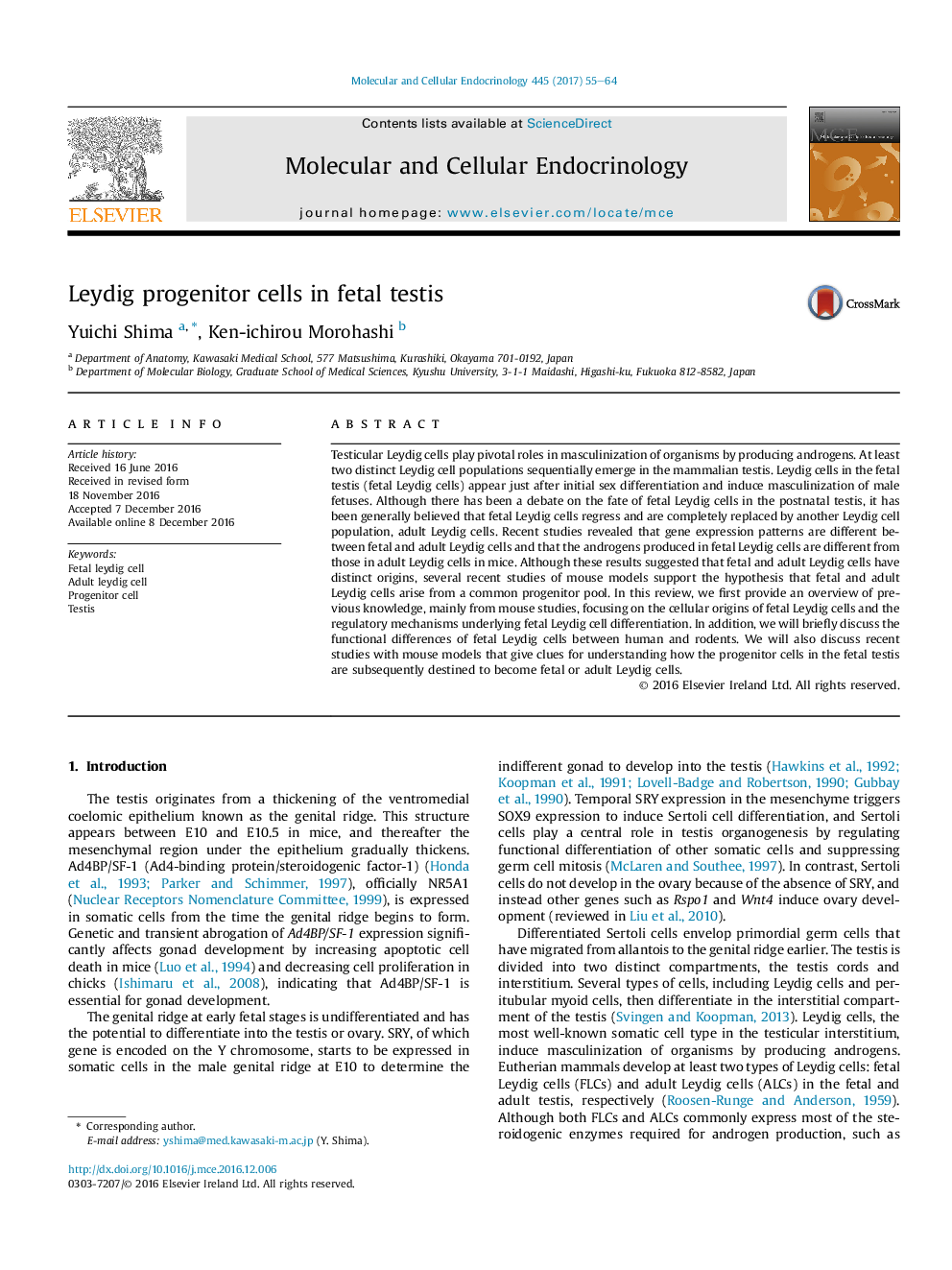| کد مقاله | کد نشریه | سال انتشار | مقاله انگلیسی | نسخه تمام متن |
|---|---|---|---|---|
| 5534283 | 1550834 | 2017 | 10 صفحه PDF | دانلود رایگان |

- A number of factors are implicated in fetal Leydig cell (FLC) differentiation.
- There are several differences between rodents FLCs and human FLCs.
- FLCs persist in the postnatal testis at least in mice.
- Progenitor cells for FLCs and adult Leydig cells (ALCs) exist in the fetal testis.
- It is poorly understood how progenitors develop into FLCs or ALCs.
Testicular Leydig cells play pivotal roles in masculinization of organisms by producing androgens. At least two distinct Leydig cell populations sequentially emerge in the mammalian testis. Leydig cells in the fetal testis (fetal Leydig cells) appear just after initial sex differentiation and induce masculinization of male fetuses. Although there has been a debate on the fate of fetal Leydig cells in the postnatal testis, it has been generally believed that fetal Leydig cells regress and are completely replaced by another Leydig cell population, adult Leydig cells. Recent studies revealed that gene expression patterns are different between fetal and adult Leydig cells and that the androgens produced in fetal Leydig cells are different from those in adult Leydig cells in mice. Although these results suggested that fetal and adult Leydig cells have distinct origins, several recent studies of mouse models support the hypothesis that fetal and adult Leydig cells arise from a common progenitor pool. In this review, we first provide an overview of previous knowledge, mainly from mouse studies, focusing on the cellular origins of fetal Leydig cells and the regulatory mechanisms underlying fetal Leydig cell differentiation. In addition, we will briefly discuss the functional differences of fetal Leydig cells between human and rodents. We will also discuss recent studies with mouse models that give clues for understanding how the progenitor cells in the fetal testis are subsequently destined to become fetal or adult Leydig cells.
Journal: Molecular and Cellular Endocrinology - Volume 445, 15 April 2017, Pages 55-64